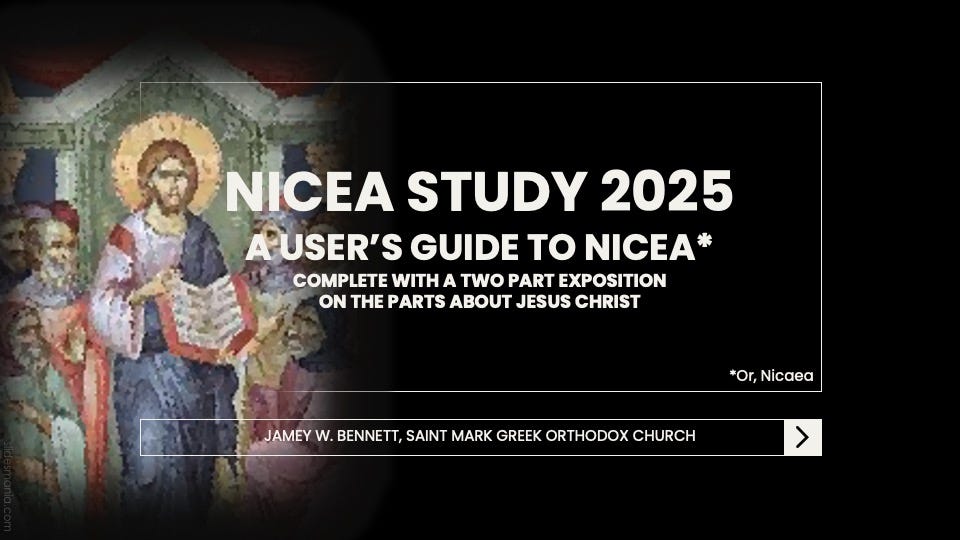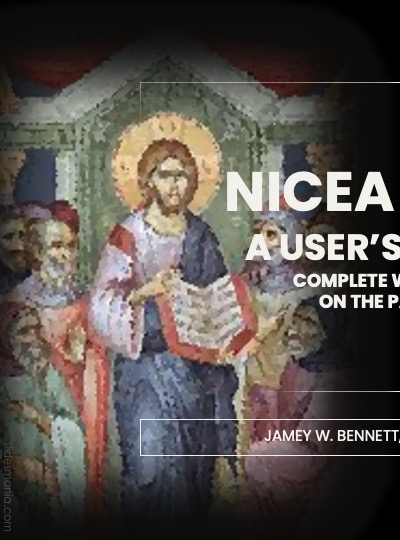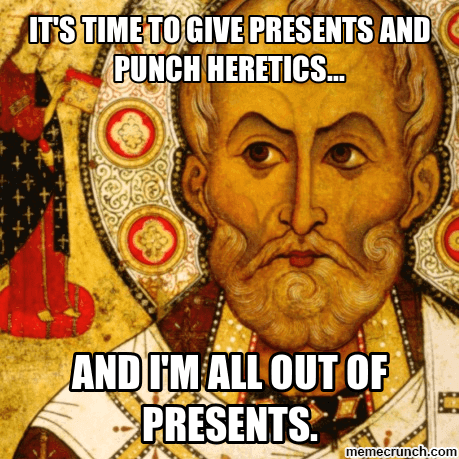A User's Guide to the Nicene Creed
A look at the historical circumstances and people before, during, and after the First Ecumenical Council, held in Nicea in AD 325 - PDF & Video Included
The following is based on a class presentation at Saint Mark Greek Orthodox Church in Boca Raton, Florida. The article has been adapted from an in-person class—the video is included below, along with a PDF download of the slideshow. This is the second part of a five part series on the Creed, you can also view the first article in the series here, which covers the first part of the Creed. We are sharing the material in the order it was presented locally at our parish. The next article, part 3, can be found here.
Introduction
The Nicene Creed, also known as the Nicene-Constantinopolitan Creed, is the definitive statement of faith for Orthodox Christians, encapsulating the core beliefs of the Church as established by the First Council of Nicea (AD 325) and refined by the First Council of Constantinople (AD 381) to address further controversies. Recited liturgically in the Divine Liturgy and at baptisms, it remains the only creed with binding authority in the Orthodox Church, uniting believers in their confession of the Triune God.
Rooted in Scripture and shaped by the early Church’s response to heresy—in the wake of cessation of persecution)—the Nicene Creed is a testament to our faith’s resilience and theological precision. This essay explores its origins, development, and enduring legacy, drawing on New Testament foundations and historical context to illumine its meaning and centrality in Orthodox Christian belief and formation.
The Roots of the Creed in Early Christianity
The word “creed” derives from the Latin credo, meaning “I believe,” and signifies a concise declaration of faith that identifies Christians and their shared convictions. In the early Church, creeds and creed-like statements were essential for catechesis and baptism, serving as a “rule of faith” (regula fidei) to guide believers in interpreting Scripture and guarding against heresy. This rule finds its roots in the New Testament, where St. Paul articulates a proto-creedal summary: “For I delivered to you as of first importance what I also received: that Christ died for our sins in accordance with the Scriptures, that he was buried, that he was raised on the third day” (1 Corinthians 15:3–4; see also Philippians 2:5-11). Such passages formed the basis for early oral creeds, which were later echoed in the writings of Church Fathers like St. Irenaeus, who defended the apostolic faith against Gnostic distortions (Against Heresies).
Local baptismal creeds varied by region but adhered to a common Trinitarian framework, reflecting Jesus’ command to baptize “in the name of the Father and of the Son and of the Holy Spirit” (Matthew 28:19). Other creeds, such as the Apostles’ Creed and the Athanasian Creed, emerged later as summaries of apostolic teaching or defenses of Trinitarian doctrine, respectively.
However, only the Nicene Creed holds universal liturgical authority in Orthodoxy, recited as a living confession of faith grounded in the New Testament revelation of Christ’s divine life and mission.
The Early Church and the Context of Persecution
From circa AD 100 to 311, the early Church endured intense persecution under Roman emperors, a period that forged its identity through martyrdom. Christians faced trials for confessing “Jesus is Lord” (Romans 10:9), a declaration that challenged imperial claims and affirmed Christ’s sovereignty. Disputes also arose over practical matters, such as the date of Pascha (or Easter), necessitating greater unity in doctrine and practice.
The Edict of Toleration (AD 311) and the Edict of Milan (AD 313) granted Christians freedom of worship, allowing the Church to emerge publicly. However, this visibility exposed internal divisions, particularly the Arian heresy, which denied Christ’s full divinity, claiming He was a created being. This heresy contradicted John’s affirmation, “In the beginning was the Word, and the Word was with God, and the Word was God” (John 1:1)—this Christian controversy prompted Emperor Constantine to convene the First Council of Nicea in AD 325 to restore unity.
The First Council of Nicea (AD 325)
The Council of Nicea, held in modern-day İznik, Turkey, was a pivotal moment, attended by approximately 318 bishops, primarily from the eastern Roman Empire. Notable figures included St. Athanasius of Alexandria, a fierce defender of Christ’s divinity; St. Nicholas of Myra, later venerated as a wonderworker; and confessors like Paphnutius of Thebes and Paul of Neocaesarea, who themselves bore physical scars in their bodies from the time of persecution. Pope Sylvester I, unable to attend due to age, sent representatives, including Hosius of Cordova and two papal legates—which ensured Rome’s participation (but nowhere indicates later claims of Papal supremacy).
The council addressed three key issues especially: the Arian heresy, the date of Pascha, and a schism involving the Meletian sect. Its most significant achievement was the Nicene Creed, which affirmed the Son’s divinity, declaring Him “of one essence” (homoousios) with the Father. This term countered Arianism and reinforced the New Testament’s testimony, such as Hebrews 1:3, which describes the Son as “the radiance of the glory of God and the exact imprint of his nature.” The creed’s language safeguarded the Orthodox understanding of the Trinity, ensuring that Christ is fully God and fully man.
The council also issued 20 canons to standardize Church discipline, covering episcopal ordination, clergy conduct, and liturgical practices. For example, Canon 20 prohibited kneeling on Sundays and during the Paschal season, in order to honor the joy of the resurrection. Myths about the council persist, such as the 14th-century legend of St. Nicholas slapping Arius or the false claim that Arius was executed (instead, he likely died on a toilet). Similarly, the council did not establish the biblical canon, which was formalized later at regional synods, nor did it institute Christmas. It did, however, standardize Pascha’s date using a calculation based on the vernal equinox and full moon, a practice retained by the Orthodox Church.
The Aftermath and the Council of Constantinople (AD 381)
The Council of Nicea did not immediately resolve all tensions. The decades following AD 325 saw theological disputes, with some emperors supporting Arianism and others upholding the Nicene faith. This turmoil necessitated the First Council of Constantinople in AD 381, convened under Emperor Theodosius I. This council reaffirmed the Nicene Creed and expanded it to address Pneumatomachian heresies, which denied the Holy Spirit’s divinity. The revised Niceno-Constantinopolitan Creed clarified the Spirit’s role, drawing on Christ’s promise: “But when the Helper comes, whom I will send to you from the Father, the Spirit of truth, who proceeds from the Father, he will bear witness about me” (John 15:26). This version remains the creed recited in Orthodox worship today.
The councils of Nicea and Constantinople helped to establish the conciliar method, whereby bishops gather to discern doctrine under the Holy Spirit’s guidance. This approach reflects the apostolic model of collective decision-making (Acts 15:6–29) and remains a cornerstone of Orthodox ecclesiology. The councils’ canons continue to shape Orthodox practice, governing liturgy, clergy qualifications, and Church governance.
The Enduring Legacy of the Nicene Creed
The Nicene Creed is a living confession, uniting Orthodox Christians in their shared faith. Recited during the Divine Liturgy, it reaffirms the Trinity, the Incarnation, and the hope of resurrection, grounding believers in the New Testament revelation. Its theological precision, forged amid persecution and heresy, reflects the courage of martyrs and confessors like those at Nicea.
For catechumens, the creed is a spiritual roadmap, inviting them to embrace the mystery of God’s revelation. As St. Athanasius wrote, it encapsulates “the very tradition, teaching, and faith of the Catholic Church from the beginning, which the Lord gave, the Apostles preached and the Fathers kept.”
In a divided world, the Nicene Creed calls Orthodox Christians to unity, rooted in the very purpose of all of Christian: the union of divinity and humanity.
Stay tuned, because we are going to get back to an expositional reading of the Nicene Creed and the next two weeks will focus on Jesus Christ in the Old and New Testaments.
Prefer to watch the class on YouTube? Here you go!






Who are the meletian sect?